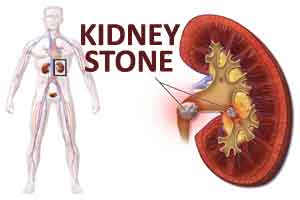- Home
- Editorial
- News
- Practice Guidelines
- Anesthesiology Guidelines
- Cancer Guidelines
- Cardiac Sciences Guidelines
- Critical Care Guidelines
- Dentistry Guidelines
- Dermatology Guidelines
- Diabetes and Endo Guidelines
- Diagnostics Guidelines
- ENT Guidelines
- Featured Practice Guidelines
- Gastroenterology Guidelines
- Geriatrics Guidelines
- Medicine Guidelines
- Nephrology Guidelines
- Neurosciences Guidelines
- Obs and Gynae Guidelines
- Ophthalmology Guidelines
- Orthopaedics Guidelines
- Paediatrics Guidelines
- Psychiatry Guidelines
- Pulmonology Guidelines
- Radiology Guidelines
- Surgery Guidelines
- Urology Guidelines
Use reduced radiation dose CT in suspected kidney stone patients, suggests study

Reduced radiation dose computed tomography (CT) should be used when CT is needed for suspected kidney stone, according to a study published in the Annals of emergency medicine.
A kidney stone is one of the major kidney disorders which needs timely detection and intervention. For suspected kidney stones, CT scan is frequently as a diagnostic tool. CT is accurate but exposes patients to ionizing radiation and has not been shown to alter either interventional approaches or hospital admission rates.
A multiorganizational transdisciplinary collaboration of Christopher L. Moore, Yale associate professor and chief of the section of emergency ultrasound in the department of emergency medicine, with a group of multidisciplinary researchers conducted a conducted a systematic review of the scientific literature seeking an evidence-based, multispecialty consensus on optimal imaging across different clinical scenarios in patients with suspected renal colic in the acute setting.
In conjunction with the American College of Emergency Physicians (ACEP) Emergency Quality Network, the group formed a 9-member panel with 3 physician representatives each from ACEP, the American College of Radiology, and the American Urology Association. A systematic literature review was used as the basis for a 3-step modified Delphi process to seek consensus on optimal imaging in 29 specific clinical scenarios.
Key Observation
- From an initial search yielding 6,337 records, there were 232 relevant articles of acceptable evidence quality to guide the literature summary.
- At the completion of the Delphi process consensus, out of the 29 scenarios agreement was rated as perfect in 15, excellent in 8, good in 3, and moderate in 3.
- There were no scenarios in which at least moderate consensus was not reached.
- CT was recommended in 7 scenarios, with ultrasonography in 9 and no further imaging needed in 12.
"Evidence and multispecialty consensus support ultrasonography or no further imaging in specific clinical scenarios, with reduced-radiation-dose CT to be used when CT is needed for patients with suspected renal colic." concluded the authors.
For reference, follow the link

Disclaimer: This site is primarily intended for healthcare professionals. Any content/information on this website does not replace the advice of medical and/or health professionals and should not be construed as medical/diagnostic advice/endorsement or prescription. Use of this site is subject to our terms of use, privacy policy, advertisement policy. © 2020 Minerva Medical Treatment Pvt Ltd